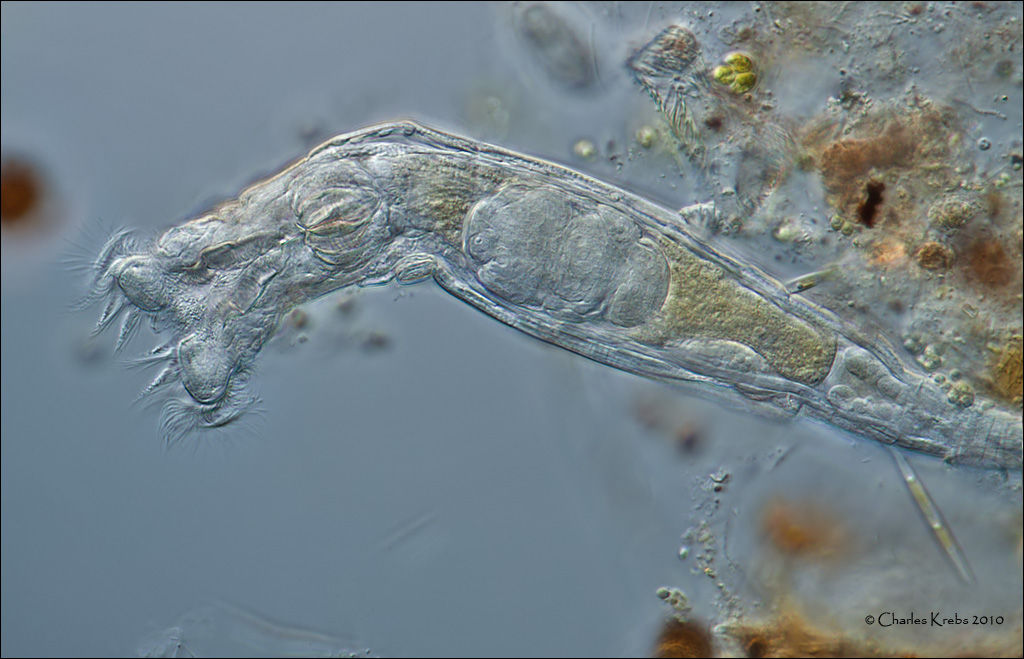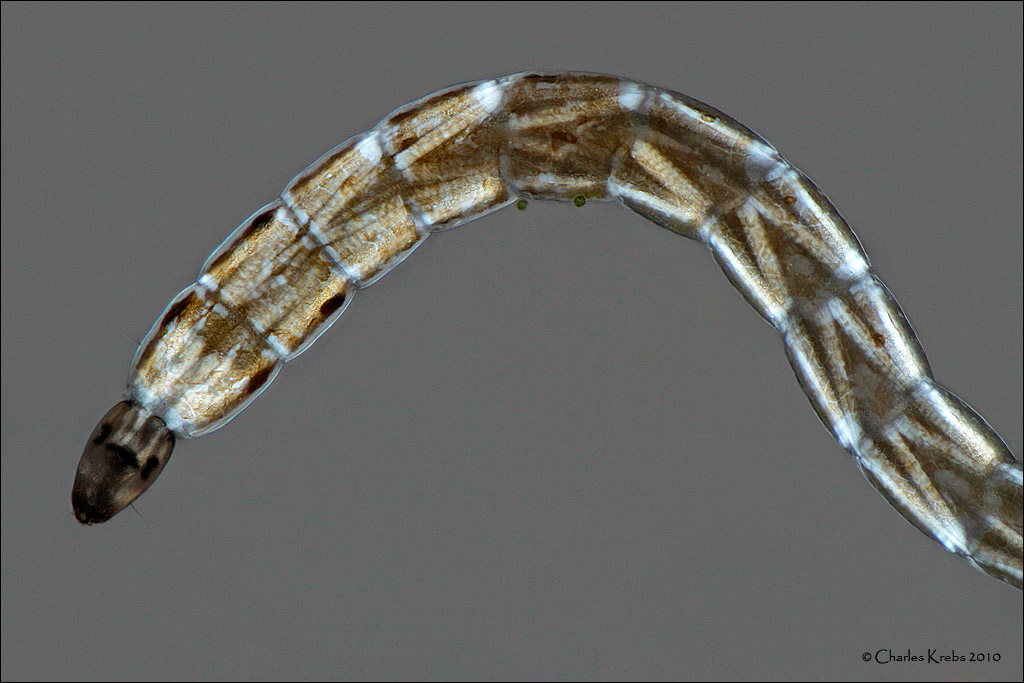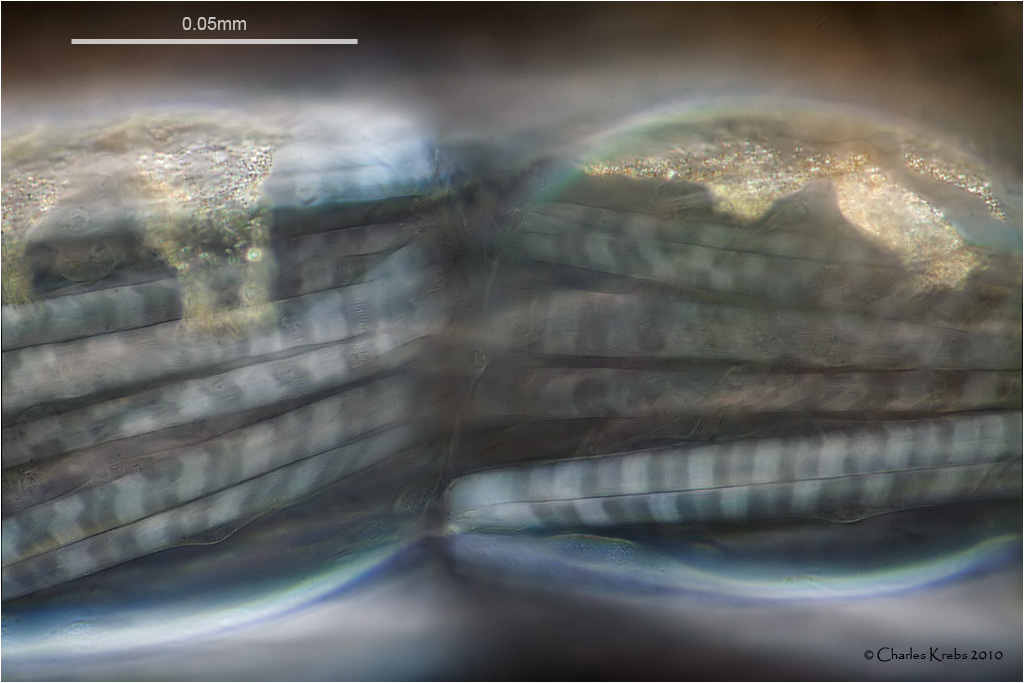The bdelloid rotifers were actually the reason I decided that I had to have electronic flash. I was so curious to see in better detail the movement pattern of the cilia.
The midge larva is an example of another lighting approach I like to use. By using crossed polarizers (one below the subject, one above... but usually not crossed to full "extinction") the muscle structure of many microscopic creatures can be easily seen. Normally these muscles are clear and colorless in regular brightfield illumination.
Olympus BHS. 40/0.95 S Plan Apo. 1.67 NFK. Canon 50D. DIC illumination.

Olympus BHS. 10/0.40 S Plan Apo. 1.67 NFK. Canon 50D. Polarized brightfield illumination.

Olympus BHS. 60/1.40 S Plan Apo. 1.67 NFK. Canon 50D. Polarized brightfield illumination.


